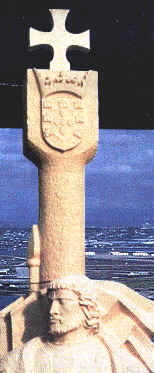|
|
Avila Adobe
1840: Ten-room adobe was part of a land grant that once included Laguna Niguel and Laguna Hills. 1879 Fire led to partial rebuilding, but the adobe is currently less than third of its original size.
Blas Aguilar Adobe
1794: This hacienda-style adobe was named after the last Alcalde (or regional governor) of Mexican/Rancho era and served as the focal point for area political and governmental activities.
Capistrano Train Depot
1894: Oldest Mission Revival style rail station in So. Cal. The red brick, dome tapped station was built by Santa Fe Railroad and was called "the finest depot on Santa Fe System".
Egan House
1898: The distinguished terra cotta brick was built by local farmer Richard Egan. After being elected Justice of Peace, he was donned the nickname King of Capistrano, and is credited as being the major influence in bringing the railroad to San Juan.
Garcia Adobe
1870: Last and only two-story rancho era adobe in San Juan, with exterior walls over 3 feet thick. The fanciful Monterey balcony was added in 1880.
Little Hollywood
1870s: Houses represent the true vernacular California style, being owner built, many using scavenged materials and having had numerous changes and additions through the year.
Mission San Juan Capistrano
Ten acre site hosts courtyard with museum rooms that take you back to Spanish and pre-history eras. Jewel of Missions houses Serra Chapel, one of the oldest structures in California and remains of Great Stone Church.
Montanez Adobe
1794: From 1886 to 1910, with no Mission priest, Dona Polonia instructed the village children. She was nicknamed pied piper of San Juan, because she was always surrounded by children.
O'Neill Museum
1870s: Constructed by saloon keeper Dolores Garcia, this vernacular structure with Victorian detail is now home to the San Juan Capistrano Historical Society and O'Neill Museum.
Rios Adobe
1794: Built for Feliciano Rios, Spanish soldier, who served with Mission garrison. Still home to 11th generation of Rios family, it is the oldest residence in California continuously occupied by single family. The late 1800s period board and batten outbuilding near the street was family run restaurant, until 1920s.
Los Rios Historic District
1887: Boasting 31 historic structures including 3 adobe homes, built in 1794. Other significant features are the numerous single-wall board and batten homes erected circa 1887 to 1910, which demonstrate "the evolution of California within single neighborhood".
Silvas Adobe
1794: Mud-and-straw bricks from this adobe, typical of those built around the Mission. It was San Juan Mission's unique policy to allow the working Mission Indians to live outside the Mission grounds in such adobes, in order to keep good relationships between Indians and incoming Spanish.
Yorba Adobe
1830: Typical adobe from this period has been owned by Oyharzabal family since 1880 and still serves as their residence. The connecting Miguel Yorba adobe served as El Adobe restaurant, until 1848. Southern portion had been the juzgado (courthouse) and jail, and at one time, served as store, stage depot and overnight hotel.

|
|

